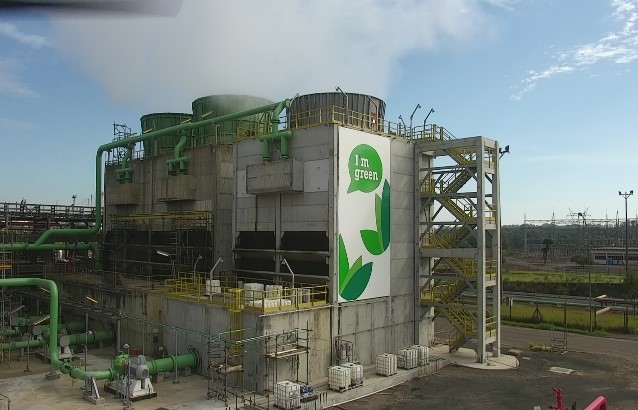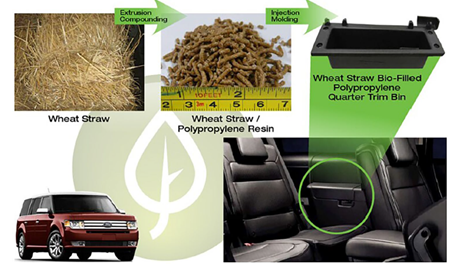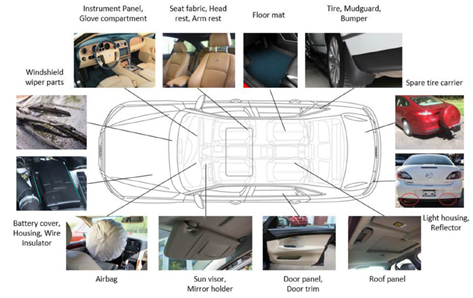Bio-PP’s Impact on Automotive Sustainability

Derived from renewable sources, Bio-PP offers a sustainable alternative to conventional polypropylene. It provides the same durability and performance while significantly reducing environmental impact.
Polypropylene (PP) has long been a primary material in automotive manufacturing due to its durability and lightweight properties. However, as the automotive industry embraces sustainable practices, developing and using bio-based polypropylene (Bio-PP) is one of the most significant advancements in this field.
With the advent of bio-PP, primarily from sugarcane, the industry is shifting significantly towards sustainability. Companies like Braskem and Mazda exemplify this shift by pioneering bio-PP production from cellulosic biomass. This bio-PP can effectively replace conventional PP in bumpers, body panels, and interior components applications.
Production of Bio-PP
In 2023, Braskem, a global leader in biopolymers, announced a project to evaluate the production of bio-based polypropylene in the U.S. This initiative leverages the company’s experience with renewable resources to create a sustainable alternative to conventional PP. Specifically, manufacturers produce Bio-PP by converting biomass into bioethanol, transforming it into bio-based propylene, and subsequently polymerizing it into Bio-PP. Moreover, this carbon-neutral process offsets the CO2 emitted during production by the CO2 absorbed by the sugarcane during its growth.

Wheat straw-reinforced PP used in the 2010 Ford Flex model taken from: Journal of Polymer Research (2023)
The ethanol-to-propylene (ETP) Process is a promising sustainable alternative for producing biopropylene. This method involves converting bioethanol, derived from biomass, into propylene using catalytic reactions. The process utilizes renewable feedstocks and aligns with the global push towards a circular economy and reduced carbon footprint.
Applications of Bio-based Resins in the Automotive Industry
Bio-based resins play a crucial role in enhancing the sustainability of automotive manufacturing, with significant applications in both interior and exterior components as well as under-the-hood parts.
- Interior Components: Manufacturers extensively use bio-based resins such as PLA, PBS, and bio-PTT in producing interior automotive parts. They commonly employ these materials to make seat covers, carpets, door panels, and trims. Not only do these resins provide the necessary durability and aesthetic appeal, but they also significantly enhance the sustainability of automotive interiors.
- Exterior Components: Automakers use Bio-PP and bio-PE for exterior parts like bumpers, body panels, and spoilers. These bio-based materials offer performance comparable to conventional plastics while reducing the environmental footprint. Consequently, the use of bio-based resins in exterior applications demonstrates the industry’s commitment to sustainability without compromising quality and performance.
- Engine and Under-the-Hood Applications: Bio-based polyamides and PEBAs are ideal for engine components and under-the-Hood applications because of their high heat resistance and mechanical strength. Automakers use these materials in air ducts, fuel lines, and other critical engine parts where reliability and performance are paramount.

Manufacturers use bioplastics to produce various components of a car. Courtesy of Journal of Polymer Research (2023)
Challenges for Bio-based Resins
Bio-based Resin production faces challenges, despite their potential. Firstly, manufacturers need to ensure a consistent and sustainable supply of biomass, addressing the issue of feedstock availability. Additionally, they need to optimize processes by improving catalyst performance and reaction conditions to achieve higher yield and efficiency. Furthermore, reducing production costs is essential to make bio-polypropylene economically viable and competitive with conventional polypropylene.
To overcome these challenges, ongoing research and technological advancements are crucial. Companies like Braskem are at the forefront of investing in bio-based propylene production. Their efforts signal a significant shift towards sustainable petrochemical practices, paving the way for a more sustainable future in the industry.
